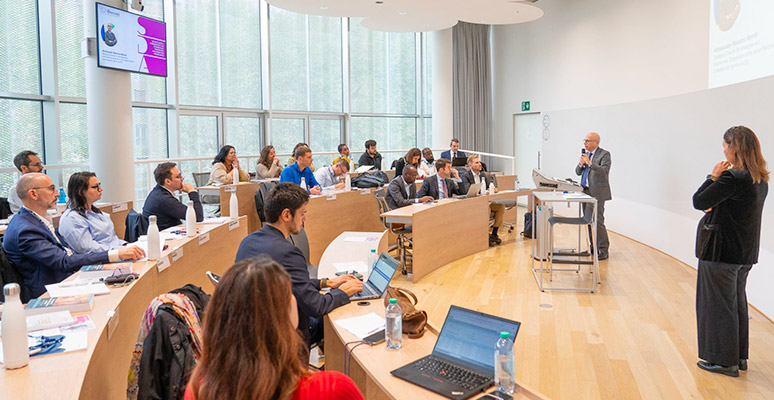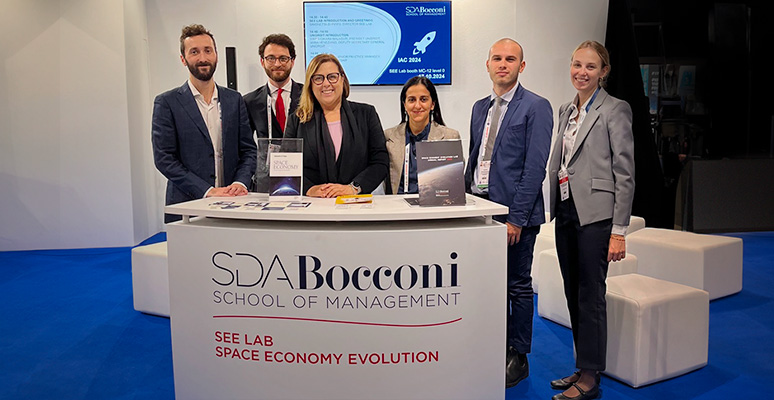
- Start Date
- Duration
- Format
- Language
- 5 may 2025
- 4 days
- Class
- Italian
Offrire le conoscenze e competenze relative all’imprenditorialità sociale e al management del terzo settore per nuovi modelli di business sostenibili.
Why should organizations try to be more inclusive? Because it’s the right thing to do, as authors Stefano Basaglia, Simona Cuomo and Zenia Simonella write in the introduction of their recent book (in Italian) entitled L’organizzazione inclusiva. Pari opportunità e diversity management, published by Egea.
Although probably no organization that exists today is truly and fully inclusive, the concept of the ‘inclusive organization’ represents an ideal that all managers and companies must aspire to, according to the authors. The aim is to enhance social relationships and respond to the ethical and moral demands of an advanced society.
Based in part on field studies collected by the Diversity, Inclusion & Smart Working Observatory at SDA Bocconi School of Management, this volume provides managers, workers and scholars with ideas and conceptual tools for understanding how and why organizations should manage diversity and encourage inclusion. Specifically, managers can compare their work environments with the models presented here, to measure their progress in the process of adopting inclusive policies and endorsing new ones, when needed. Employees, for their part, can either individually or collectively assess the organization where they work to gauge whether there is a serious commitment to creating a more inclusive climate.
Let’s start with a question that seems simple and straightforward, but really isn’t: what is an inclusive organization?
It’s an organization that is open and elastic, that doesn’t discriminate, and that treats all workers with dignity and respect, empowering them to express themselves freely and participate in organizational life. In our book, we looked at the more common notions of diversity (gender, parenthood, the LGBTQI+ community, age, generation, disability, ethnicity) as well as categories that are not normally included or don’t garner much attention in the public debate on the issue (union membership, professional family, family, employment contract, social class, physical appearance, personality)
What are the best strategies for promoting a corporate culture that is truly inclusive?
To build an inclusive organization, you need to work on policies, structures, and behaviors. The process has to be both top-down and bottom-up. So on one hand, the leaders of the organization must recognize the importance of being inclusive. In a medium-sized or large organization, this consists of defining a strategy, setting targets, instituting organizational structures tasked with addressing inclusiveness, and having a medium- to long-term action plan. In smaller organizations, the level of formalization can vary. On the other hand, participation needs to come from the bottom, by promoting the creation of employee networks and spontaneous projects. It’s this circularity that helps build an inclusive organization.
The risk of working with a one-way approach is ending up either with too much formality and bureaucracy or creating dispersion and confusion. Clearly, it’s essential to train workers and raise awareness at all levels of the organization, supporting integration and interaction between different roles, groups, functions and categories.
What role does leadership play in inclusive processes?
Company leaders are the builders of the corporate culture. Taking on this role with an eye to inclusion means asking yourself how willing you are to be open to the diversity of your collaborators, to advocate for them as individuals and as members of a category of people who may be socially marginalized or stigmatized in society, or as minorities in the organizational context in question. What we’re seeing with the most recent approaches is that the challenge for inclusive leaders is not so much having a wide range of diversity in their group, but rather creating the conditions for minimizing the risk of this diversity provoking exclusion while maximizing chances for self-expression and participation.
A topic of heated debate in political and social spheres is diversity based on sexual orientation. What are the most effective practices for diversity management in this area, as you see it?
The most effective practices depend to a large extent on the social-legal context of the organization. In Italy, our LGBTQI+ citizens enjoy less equality and weaker protection of their rights with respect to other European countries such as Spain, France, and Germany. (In the Rainbow Europe classification compiled by ILGA Europe, Italy ranks 33rd out of 49 countries.) This makes it more complicated to adopt policies, practices, and actions for LGBTQI+ workers. One of the most effective interventions is creating groups of LGBTQI+ employees within the company who can shine a light on LGBTQI+ issues, raising awareness and encouraging conversations throughout the organization both vertically (up the ranks) and horizontally (among peers).
These groups can also guard against the danger that policies pertaining to LGBTQI+ folks devolve into mere pinkwashing, in other words, exploiting the LGBTQI+ world to hide other problems (for example, routinely denying job security to workers in certain operational functions), or simply to attack the market of LGBTQI+ customers. These groups can also play a role outside the company: in collaboration with organizations in the LGBTQI+ movement, they can pressure the government, the parliament, etc. to approve laws that promote equality for LGBTQI+ citizens (passing an anti-homo/transphobia law, ensuring full marriage rights for same-sex couples, and so forth). Another key aspect, in light of the lack of legislation in Italy, is extending all the rights and benefits that ‘traditional’ families enjoy to LGBTQI+ families as well.
Discover more on SDA Bocconi Insight
SDA Bocconi School of Management

Offrire le conoscenze e competenze relative all’imprenditorialità sociale e al management del terzo settore per nuovi modelli di business sostenibili.

Fornire principi e strumenti efficaci per la gestione strategica dell’attività di raccolta fondi a supporto della sostenibilità della causa sociale.

Il corso offre strumenti e metodologie utili a introdurre una visione strategica della gestione del personale.

